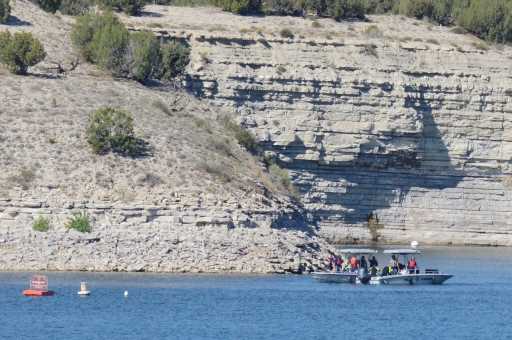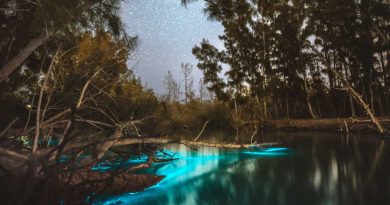Colorado breaks its record for recreation-related drownings in a year
More people have died on Colorado waters so far in 2022 than ever before, according to numbers compiled by Colorado Parks and Wildlife. The majority of these recreation-related deaths, 34, took place on lakes, rivers and reservoirs, while two of the victims were camping when they were swept away by a flash flood in the Roosevelt National Forest.
The previous record of 34 was set in 2020. There were 24 drownings in 2019 and 22 last year.
“It’s just more people coming to Colorado,” said CPW spokesman Joey Livingston. “People come to Colorado to get outdoors and recreate. The more people that are here, the more that are out there recreating. That is going to increase the chances of incidents happening.”
Of the total, 22 of the deaths were classified as “flatwater,” meaning lakes, and 12 occurred on “swiftwater’” meaning rivers. Eleven of the drowning victims were swimmers while five were paddle boarding. Four happened while rafting and three while tubing.
CPW doesn’t have figures on how many of the fatalities this year were alcohol-related, but the CDC says alcohol is involved in up to 70% of water-recreation deaths from year to year.
The most recent incidents took place early this month. On Sept. 9 two men drowned in Dillon Reservoir after going for a nighttime swim; their bodies were recovered the next day, according to authorities. “We do believe alcohol was involved with that one,” Livingston said.
The following evening a stand-up paddleboarder fell off his board in a lake near Clifton on the Western Slope and his body was recovered overnight. He was not wearing a life jacket.
Because the U.S. Coast Guard categorizes paddleboards as “vessels,” users are required to have life jackets with them, although they are not required to put them on.
“We always want to plug life jackets,” said Joe Stadterman, a member of CPW’s Marine Evidence Recovery Team. “The 59 drowning victim recoveries I’ve done on flatwater, not one of them was wearing a life jacket. If we’re not talking rivers, the vast majority of people will be saved by life jackets.”
The Dillon Reservoir incident this month illustrates a common theme in Colorado flatwater drownings: swimmers recreating in shallow water, then unexpectedly stepping off a steep drop-off. Many Colorado recreational lakes were created by dams spanning river canyons, so wading can be dangerous.
“They think, ‘I can touch the bottom, don’t need a life jacket,’ but that’s not always the case,” Livingston said. “A lot of these lakes have very steep drop-offs.”
In the most publicized drownings of the year, 13 people were aboard a boat with a capacity of six when a storm came up and the boat capsized at Lake Pueblo State Park, where Stadterman is the park manager. Park rescue teams responded and saved 11 — eight juveniles and three adults — but two adults drowned. Despite wind and rough water, Stadterman said the boat probably could have reached shore safely if it hadn’t been overloaded.
Six of this year’s drownings occurred at Lake Pueblo, Colorado’s busiest state park, which attracted 4.7 million visitors in 2021.
As for the swiftwater deaths, two of the four drownings associated with rafting happened on commercial trips.
David Costlow, executive director of the Colorado River Outfitters Association, said about 600,000 people will have gone rafting on guided commercial trips in the state by the end of this year. “Sometimes there are zero, sometimes there are a few more. Our goal is always zero.”
Although summer has ended, CPW officials say that’s no guarantee there won’t be more drownings before the end of the year. Some lakes are open year-round, including Lake Pueblo, and the arrival of fall brings waterfowl hunting season.
“A lot of waterfowl hunting is done from boats,” Stadterman said. “A lot of those guys wear waders to get out of the boat, put their decoys out and then get back in their boat to go out in deeper water. We have had incidents where people get in the water with their waders, their waders fill up with water and they sink.
“So waterfowl season is definitely a time when people need to make sure they are being safe, make sure they’ve got their waders on correctly, and wear a life jacket,” he continued. “Then, as we move into ice fishing season, make sure you’re checking ice conditions and educating yourself.”
CPW’s Marine Evidence Recovery Team uses sonar equipment to locate bodies and crime evidence at state parks and in other bodies of water for outside law enforcement agencies. Like any first-responder job, it can be stressful.
“We think a lot about that,” Stadterman said. “We try to take care of each other. We have some training in looking for signs as far as people struggling with any kind of lasting effects or PTSD. It’s hard on our team, it’s hard on our families, but we know it’s really important work. In drowning victim recovery, we want to provide a much-needed service. Bringing closure to families of drowning victims is something we really think is important.”
Subscribe to our weekly newsletter, The Adventurist, to get outdoors news sent straight to your inbox.
Source: Read Full Article




